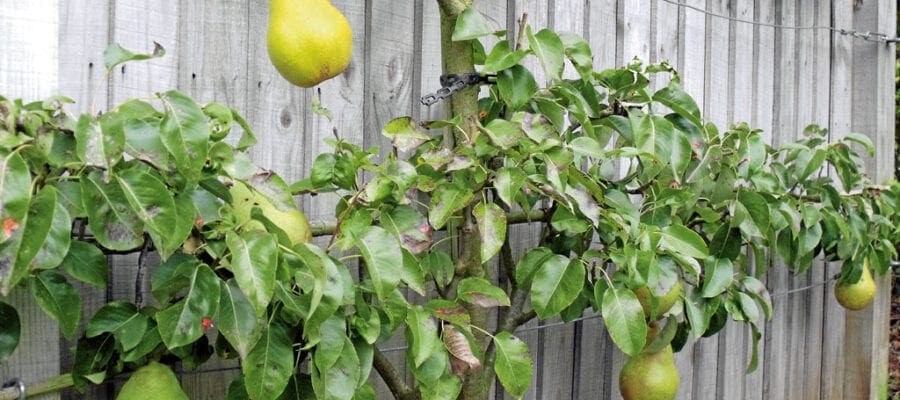
Most people can find space in their garden, whatever its size, for growing fruit. Here are a few suggestions:
- Use Minarette or Pillarette fruit trees (single pole trees) in flower borders or put a line of them at the end of your allotment to act as a screen. Several different varieties can be grown to give a wonderful choice of flavours.
- Grow strawberries in a strawberry pot or in growing-bags on the patio. The modern varieties crop heavily.
- Got a bare south-facing wall? Train a fig, apricot or peach against it for something a bit different. Alternatively there are some great dwarf ones to grow in pots.
- Grow two blueberry bushes in tubs – two are best for pollination purposes.
- Grow a thornless blackberry through and over a hedge and enjoy foraging for food in the autumn.
- Use that vacant corner for a couple of clumps of rhubarb. Force one of the clumps in year one by covering with a bucket or special terracotta forcer in late winter. Then allow this clump to grow normally and ‘rest’ in the second year when you are forcing clump two. You get better tender tasty stems by forcing.
- Grow a grapevine in a large pot and train up a pole and then cascade the stems over an upside-down hanging basket fixed on top. Makes a great focal point.

Siting fruit
In a perfect world your fruit trees and bushes would love a slightly sloping south-facing sheltered site, not in a frost pocket, and walls to offer warmth and protection from wind and free-draining loamy soil. In reality we have to make do with what we have. You don’t need acres of space and perfect conditions. If you have a choice in where to plant fruit then here are some top tips for siting.
Frost pocket avoidance
This is one of the most important aspects of fruit siting. Late spring frosts can damage flowers and a whole crop of fruit can be lost. Very cold air naturally sinks to the lowest point and so frost pockets can form at the base of slopes especially if there is a wall or dense barrier of growth at the bottom preventing the cold air from flowing away. Sometimes it is not easy to get an idea of the lie of the land but if you have a sloping garden just avoid planting fruit at the base. Aim to plant higher up the slope.
Sunny site
Fruit does best in a sunny position but part shade during the day is acceptable. For areas prone to longer periods of shade, growing fruit is going to be more difficult. Blackberries and the currants are the most tolerant of a little shade although yields may be reduced.
Windy site
Avoid planting fruit on very windy exposed sites as strong winds can damage delicate flowers and break branches. If you have room consider planting a hedge to filter the wind or installing some sort of windbreak material.





